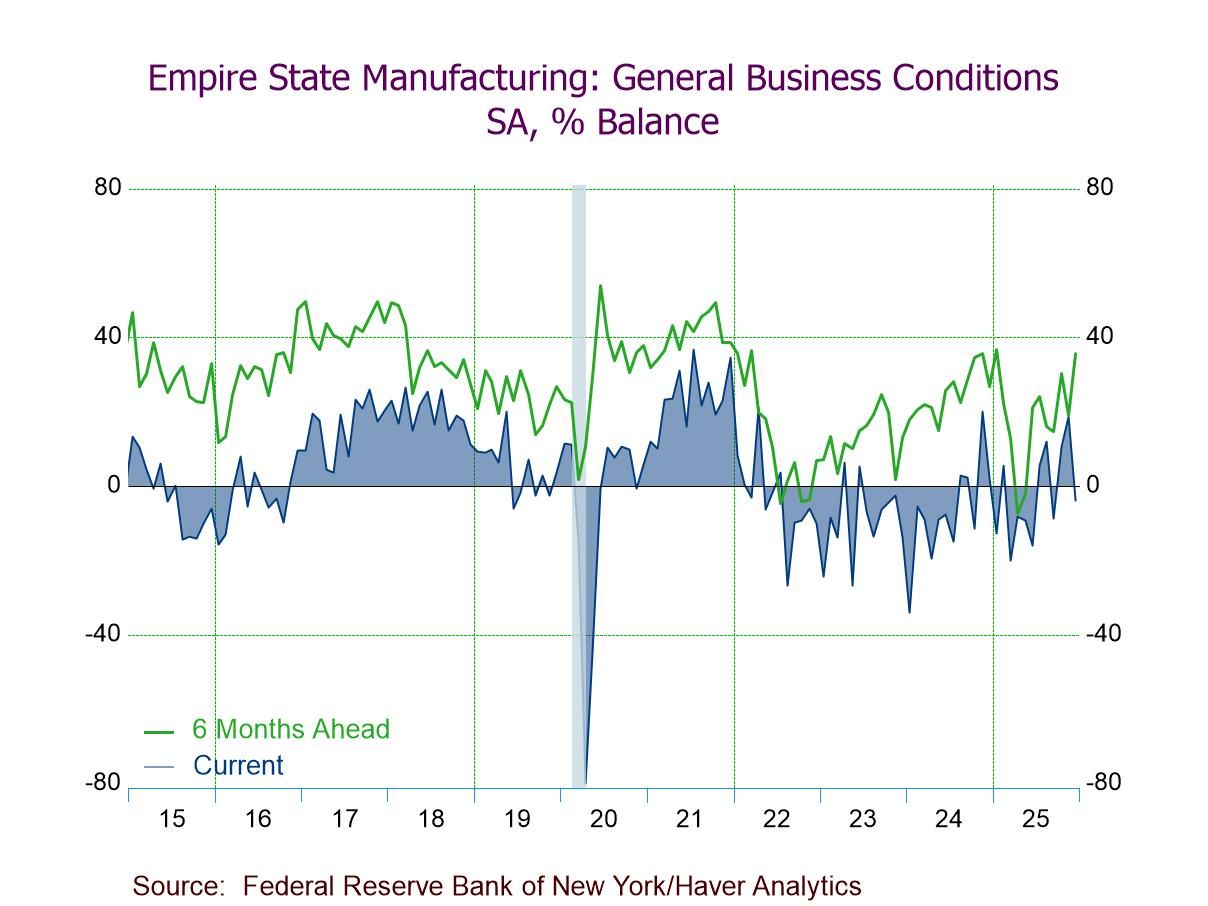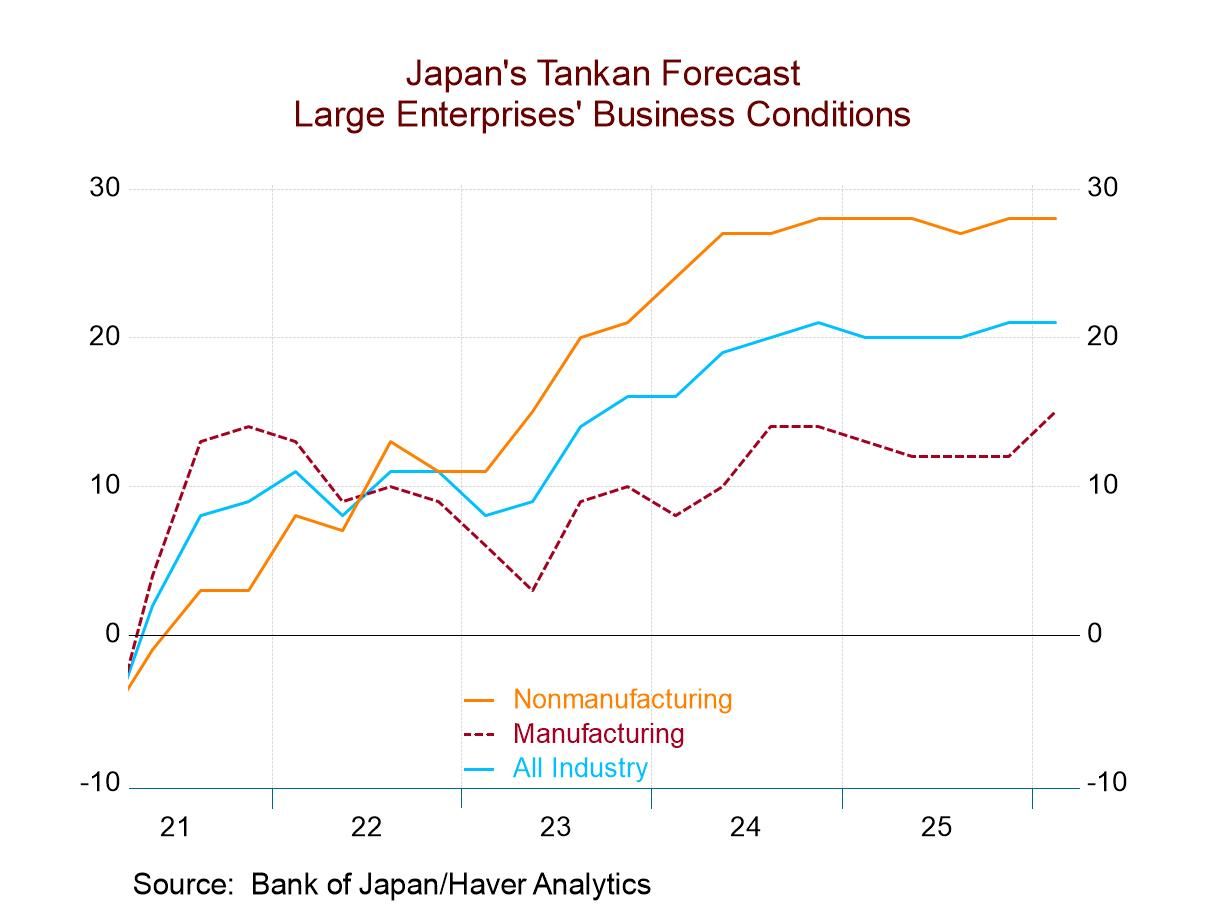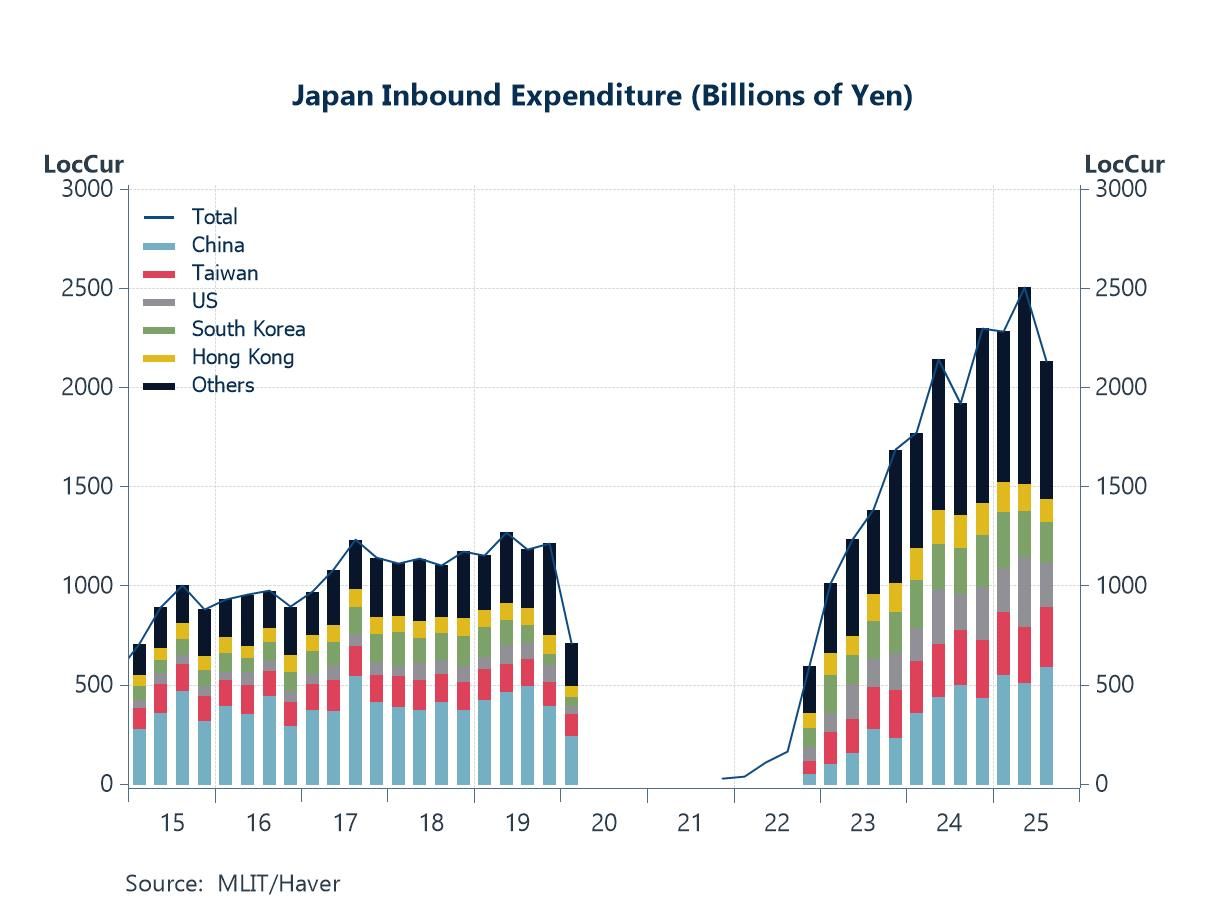 Global| Feb 17 2009
Global| Feb 17 2009U.S. Empire State Index Fell To A New Low
by:Tom Moeller
|in:Economy in Brief
Summary
The February Empire State Index of manufacturing sector activity, reported by the Federal Reserve Bank of New York, fell to a new low for the series which dates back to 2001. The figure of -34.65 was down from -22.20 in January and it [...]
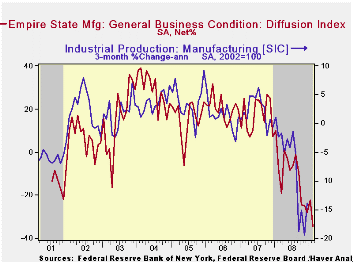
The February Empire State Index of manufacturing sector activity, reported by the Federal Reserve Bank of New York, fell to a new low for the series which dates back to 2001. The figure of -34.65 was down from -22.20 in January and it was lower than Consensus expectations for a reading of -24.0.
The figure is a diffusion index. Since the series' inception in 2001 there has been a 68% correlation between its level and the three-month change in U.S. factory sector industrial production.
The index of pricing pressure improved slightly month-to-month but it too remained near the series' low. Since inception in 2001, there has been a 77% correlation between the index of prices paid and the three-month change in the core intermediate materials PPI.
The new orders index fell sharply from January to a new series low of -30.51. That compares to last February's reading of -10.40.Fifty percent of survey participants reported lower levels of orders while only twenty percent reported higher orders.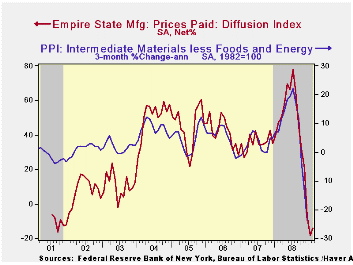
The employment index improved just slightly month-to-month but also remained near the series' low. In the history of the NY employment index, there has been an 87% correlation between it and the three-month growth in overall U.S. factory sector employment as reported by the Labor Department.
Like the Philadelphia Fed Index of General Business Conditions, the Empire State Business Conditions Index reflects answers to an independent survey question; it is not a weighted combination of the components.
The Empire State index of expected business conditions in six months fell to near the series' low. The subseries for employment collapsed and new orders remained near the series' low. The pricing index moved into negative territory.
The Empire State Manufacturing Survey is a monthly survey of manufacturers in New York State conducted by the Federal Reserve Bank of New York. Participants from across the state in a variety of industries respond to a questionnaire and report the change in a variety of indicators from the previous month. Respondents also state the likely direction of these same indicators six months ahead. For more on the Empire State Manufacturing Survey, including methodologies and the latest report, click here.
The Empire State data is available in Haver's SURVEYS database.
For more on the Empire State Manufacturing Survey, including methodologies and the latest report, click here.
The Empire State data is available in Haver's SURVEYS database.
Stabilizing the Housing Market: Focus on Communities is yesterday's speech by Federal Reserve Governor Elizabeth A. Duke and it can be found here.
| Empire State Manufacturing Survey | February | January | February '08 | 2008 | 2007 | 2006 |
|---|---|---|---|---|---|---|
| General Business Conditions (diffusion index, %) | -34.65 | -22.20 | -7.52 | -10.10 | 17.23 | 20.24 |
| Prices Paid | -13.79 | -18.18 | 47.37 | 46.99 | 35.64 | 41.88 |
Tom Moeller
AuthorMore in Author Profile »Prior to joining Haver Analytics in 2000, Mr. Moeller worked as the Economist at Chancellor Capital Management from 1985 to 1999. There, he developed comprehensive economic forecasts and interpreted economic data for equity and fixed income portfolio managers. Also at Chancellor, Mr. Moeller worked as an equity analyst and was responsible for researching and rating companies in the economically sensitive automobile and housing industries for investment in Chancellor’s equity portfolio. Prior to joining Chancellor, Mr. Moeller was an Economist at Citibank from 1979 to 1984. He also analyzed pricing behavior in the metals industry for the Council on Wage and Price Stability in Washington, D.C. In 1999, Mr. Moeller received the award for most accurate forecast from the Forecasters' Club of New York. From 1990 to 1992 he was President of the New York Association for Business Economists. Mr. Moeller earned an M.B.A. in Finance from Fordham University, where he graduated in 1987. He holds a Bachelor of Arts in Economics from George Washington University.



